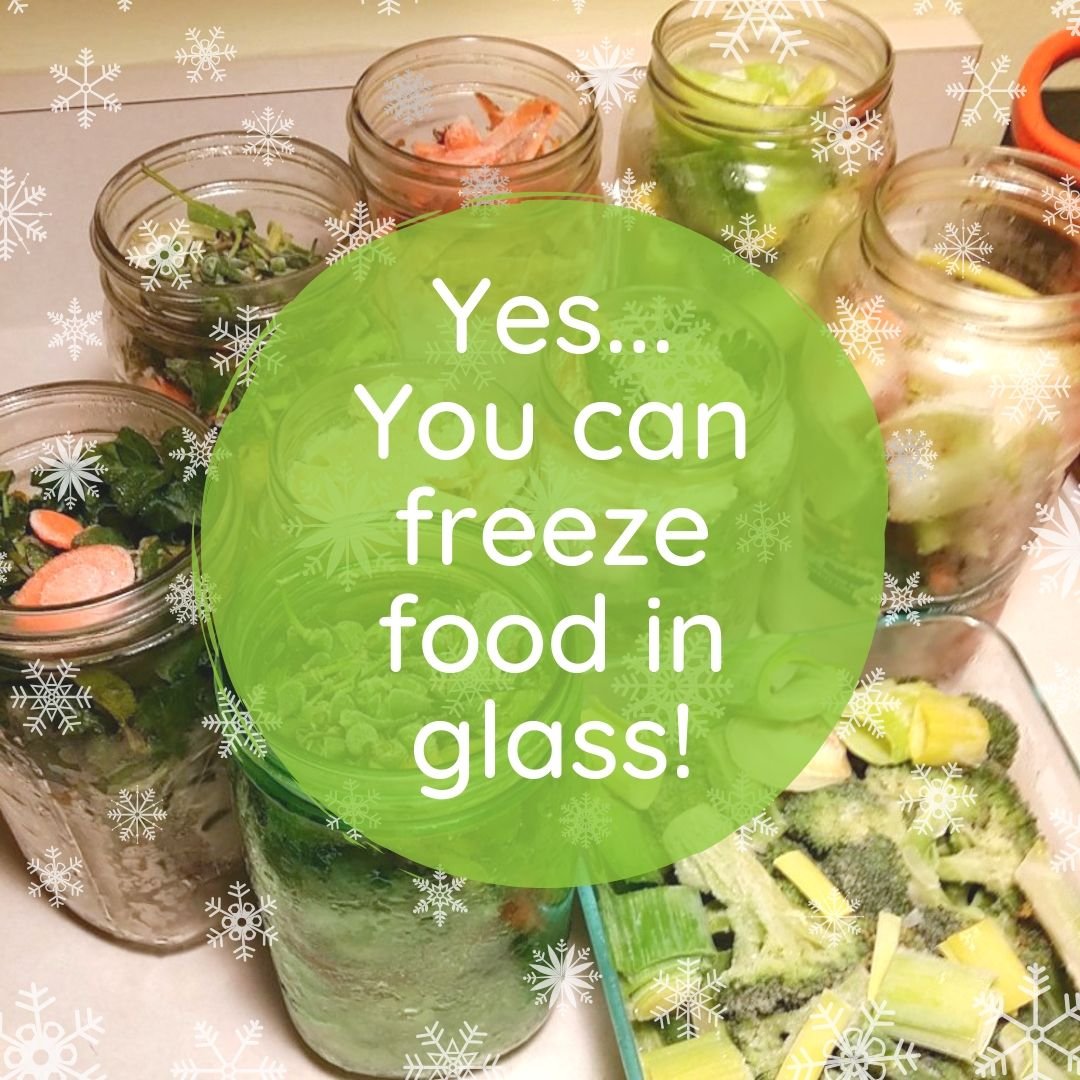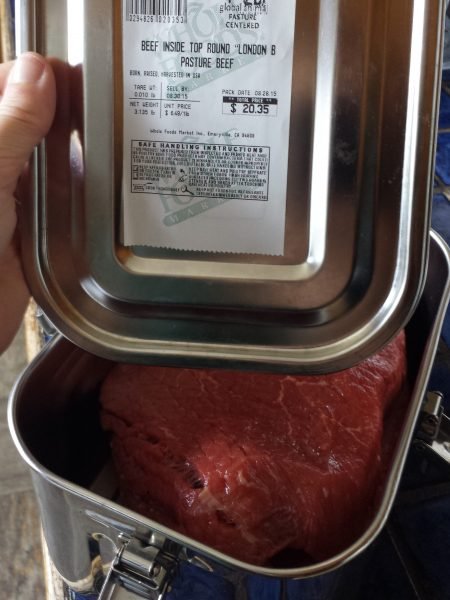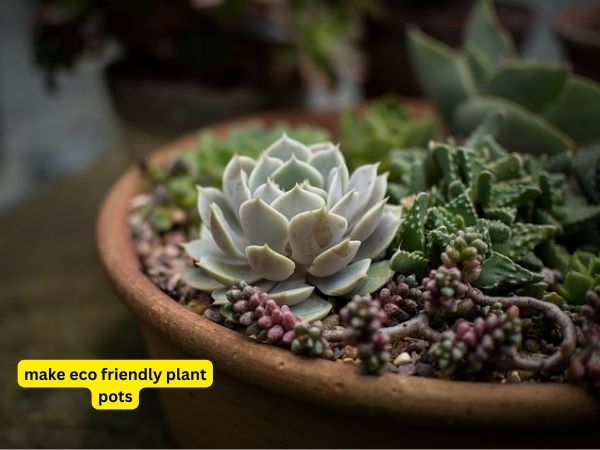how to freeze food without plastic using glass jars
Looking for an eco-friendly way to freeze your food without relying on plastic? You’ve come to the right place! In this article, we’ll explore a simple and sustainable solution: using glass jars. By leveraging the convenience of glass containers, you can preserve your meals, reduce waste, and minimize your carbon footprint all at once. Say goodbye to single-use plastics and hello to a more sustainable freezer storage method. So, how exactly can you freeze food without plastic using glass jars? Let’s delve into the details!
How to Freeze Food Without Plastic Using Glass Jars
Freezing food is a convenient way to preserve its freshness and extend its shelf life. However, many people are concerned about the potential health and environmental risks associated with using plastic containers for freezing. Fortunately, there is a more sustainable and safe alternative – using glass jars. In this article, we will explore the step-by-step process of freezing food without plastic, using glass jars as a reliable and eco-friendly option.
Why Choose Glass Jars for Freezing?
Before we delve into the specifics of freezing food with glass jars, let’s discuss why they are a great choice for preserving your favorite dishes:
1. Non-Toxic and Chemical-Free
Glass jars are made from natural materials, primarily silica, which is inert and non-reactive. Unlike plastic containers, glass does not leach harmful chemicals or toxins into your food when exposed to cold temperatures. This ensures that your frozen food remains safe and free from any potential health risks.
2. Durable and Sturdy
Glass jars are known for their durability and sturdiness. They are resistant to cracking, warping, or melting when subjected to extreme temperatures. This makes them a reliable option for long-term food storage, even in the freezer.
3. Versatile and Reusable
Glass jars come in various sizes and shapes, allowing you to freeze a wide range of food items conveniently. Additionally, they are reusable, reducing waste and helping you adopt a more sustainable lifestyle.
The Step-by-Step Process
Now that we understand the benefits of using glass jars for freezing, let’s dive into the step-by-step process of freezing food without plastic:
Step 1: Choose the Right Glass Jars
Not all glass jars are suitable for freezing. To ensure success, opt for jars specifically designed for freezing or canning. These jars are usually made from tempered glass, which can withstand extreme temperatures without shattering. Look for jars with airtight lids or those that can accommodate vacuum sealing, as this helps preserve the quality of your frozen food.
Step 2: Prepare the Food for Freezing
Properly preparing your food before freezing is crucial to maintain its flavor and texture. Here are some general guidelines:
- Blanch vegetables briefly in boiling water and then cool them in an ice bath to stop the cooking process.
- Cool soups, stews, and sauces completely before transferring them to jars. Leave some headspace to allow for expansion during freezing.
- Cut larger food items, such as fruits or meats, into smaller portions that can easily fit into the jars.
Step 3: Fill the Glass Jars
Once you’ve prepared your food, it’s time to transfer it into the glass jars:
- Leave enough headspace in the jars to allow for expansion during freezing, usually about 1 inch (2.5 cm).
- Consider using wide-mouth jars as they make filling and retrieving food easier.
- Ensure the rims of the jars are clean and dry to create a proper seal.
Step 4: Label and Date the Jars
To stay organized and avoid any confusion later, it’s essential to label each jar with the type of food and the date it was frozen. Use a waterproof marker or adhesive labels that can withstand freezing temperatures.
Step 5: Freezing and Thawing
To freeze the food using glass jars:
- Place the filled jars in the freezer, leaving enough space between them for air circulation.
- For faster freezing, arrange the jars in a single layer and avoid overcrowding.
- Allow sufficient time for the food to freeze completely before stacking the jars to optimize freezer space.
When it’s time to thaw the frozen food:
- Transfer the desired amount of food from the glass jar to a suitable thawing container.
- Thaw in the refrigerator overnight or use a defrost function on your microwave.
- Consume the thawed food within the recommended time frame to maintain its quality.
Tips and Considerations
1. Choose Freezer-Safe Lids
While the glass jars themselves are freezer-safe, not all lids are. Opt for lids specifically designed for freezing or canning, as they are made to withstand low temperatures without cracking or compromising the seal.
2. Use Vacuum-Sealing
Consider investing in a vacuum sealer or use jars that are compatible with vacuum-sealing systems. Removing excess air from the jars helps prevent freezer burn and maintains the quality of your frozen food for longer periods.
3. Avoid Overfilling
Leave enough headspace in the jars to accommodate expansion during freezing. Overfilling the jars can cause them to crack or break due to the pressure exerted by the expanding food.
4. Stacking and Organizing
When stacking glass jars in the freezer, be mindful of their stability. Avoid stacking them too high or in an unstable manner to prevent accidents. Additionally, organize your frozen food inventory by grouping similar items together and keeping an inventory list for easy reference.
5. Repurposing Glass Jars
Glass jars can serve multiple purposes beyond freezing food. Once you’ve emptied a jar, wash it thoroughly and reuse it for storing dry goods, making homemade jams or pickles, or as drinking glasses. Get creative and unleash the potential of glass jars in your household!
Freezing food without plastic using glass jars is a practical and sustainable way to preserve your favorite dishes. By following the simple steps outlined in this guide, you can enjoy the convenience of frozen food while minimizing your environmental footprint. Make the switch to glass jars for freezing and embrace a healthier and eco-friendly approach to food storage. So, go ahead, stock up on glass jars, and freeze your way to delicious meals, minus the plastic!
How to Freeze Food Without Plastic Video
Frequently Asked Questions
Can I freeze food without using plastic by using glass jars?
Yes, you can freeze food without using plastic by using glass jars. Glass jars are a great alternative to plastic containers as they are non-toxic, non-porous, and do not contain any harmful chemicals that may leach into your food. When using glass jars for freezing, it is important to leave some headspace to allow for expansion as the food freezes. Additionally, make sure to use wide-mouthed jars to facilitate easy removal of frozen food.
What types of food can be frozen in glass jars?
You can freeze a variety of foods in glass jars including soups, stews, sauces, fruits, vegetables, and even cooked grains. However, it is important to note that not all foods freeze well in glass jars. Foods with high water content, such as lettuce or cucumbers, may become mushy when thawed, so it is best to avoid freezing them in glass jars.
How should I prepare glass jars for freezing food?
Prior to freezing food in glass jars, it is essential to choose jars specifically designed for freezing. Ensure the jars are clean and sterilized by washing them with hot soapy water and rinsing thoroughly. Once cleaned, let the jars air dry or use a clean towel to dry them completely before adding the food. It is also advisable to cool the food before pouring it into the jars to prevent thermal shock.
How do I prevent glass jars from breaking in the freezer?
To prevent glass jars from breaking in the freezer, it is crucial to follow some guidelines. Firstly, leave enough headspace in the jar to allow for expansion as the food freezes. This prevents the pressure from building up and the jar from cracking. Secondly, avoid placing hot jars directly into the freezer; let them cool to room temperature or refrigerate them for a while. Additionally, make sure to place the jars on a freezer-safe surface and avoid stacking them until the food is completely frozen.
Should I use a specific type of glass jar for freezing food?
When freezing food in glass jars, it is recommended to use jars specifically designed for freezing. Look for jars made of tempered glass, which is more resistant to thermal shock. Additionally, choose wide-mouthed jars as they allow for easier filling and removal of frozen food. Avoid using jars with metal lids as they may rust over time.
How long can food be stored in glass jars in the freezer?
The length of time food can be stored in glass jars in the freezer depends on the type of food and how well it is packaged. Generally, most foods can be stored in the freezer for up to 3-6 months without significant loss of quality. However, it is a good practice to label the jars with the date of freezing to ensure you consume the oldest food first.
Final Thoughts
Freezing food without plastic using glass jars is a sustainable and eco-friendly alternative. By opting for glass jars, you can reduce plastic waste and the potential health risks associated with plastic containers. These jars provide a safe and non-toxic way to store and freeze your food. Simply follow these steps: select glass jars with a wide mouth, leave enough headspace for expansion, and cool the food before freezing. Remember to label and organize your jars for easy retrieval. With this simple method, you can preserve your food while minimizing your environmental impact. Start freezing food without plastic using glass jars today.




